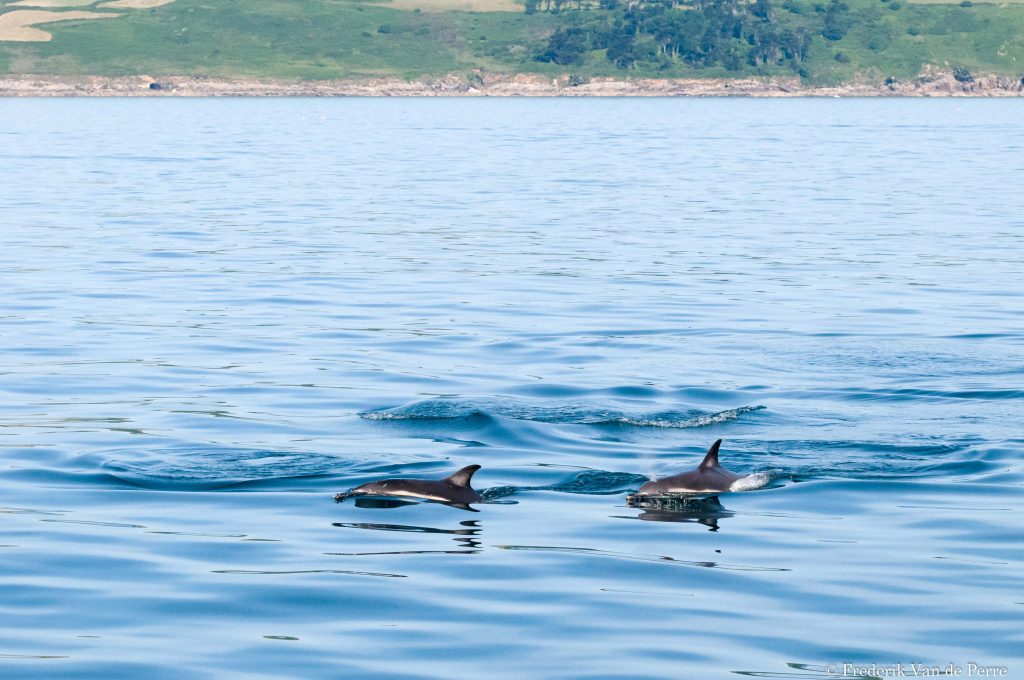In a beautiful rugged land battered by the winds of the Celtic sea, home to the legendary King Arthur, dwell fabulous animals. Taking the opportunity of a short course we followed at the Exeter University at the end of June 2018, we took three weeks to explore Cornwall (and a little bit of Devon). Starting in Falmouth, we moved around the coast from one bed and breakfast to the next, meeting many lovely local residents keen for us to enjoy these parts of mythical England. Whether hiking or looking for animals both on land and in the sea, we mainly followed tips from our beloved Wild Guide: Devon, Cornwall and South West, which turned out to be an incredible source of inspiration to enjoy these holidays. Dreaming of puffins, dolphins and even basking sharks, we set out on a new adventure in Cornwall.
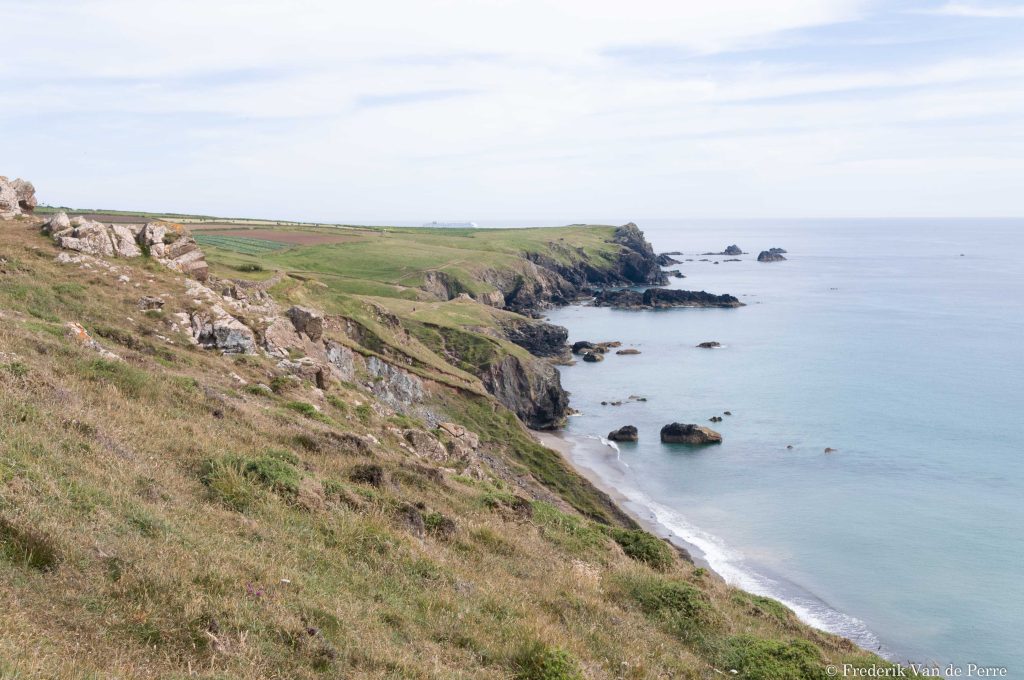
TREASURES OF THE SEAS
Cornwall is most famous for its very capricious weather, but we were graced by a blazing sun. Although the azure water was very appealing from the warm coast, the water was cold and we enjoyed it best from the comfort of a boat. Following the advice of fellow biologists, we took two wildlife boat trips, around Penzance and near Padstow.
But whether sailing on the catamaran of the Marine Discovery or speeding with the power boat of Sea Life Safari Boat Trip, we saw scores of Razorbills (Alca torda), Common Murres or Guillemots (Uria aalge), Northern Gannets (Morus bassanus) and a few Common Eiders (Somateria mollissima).
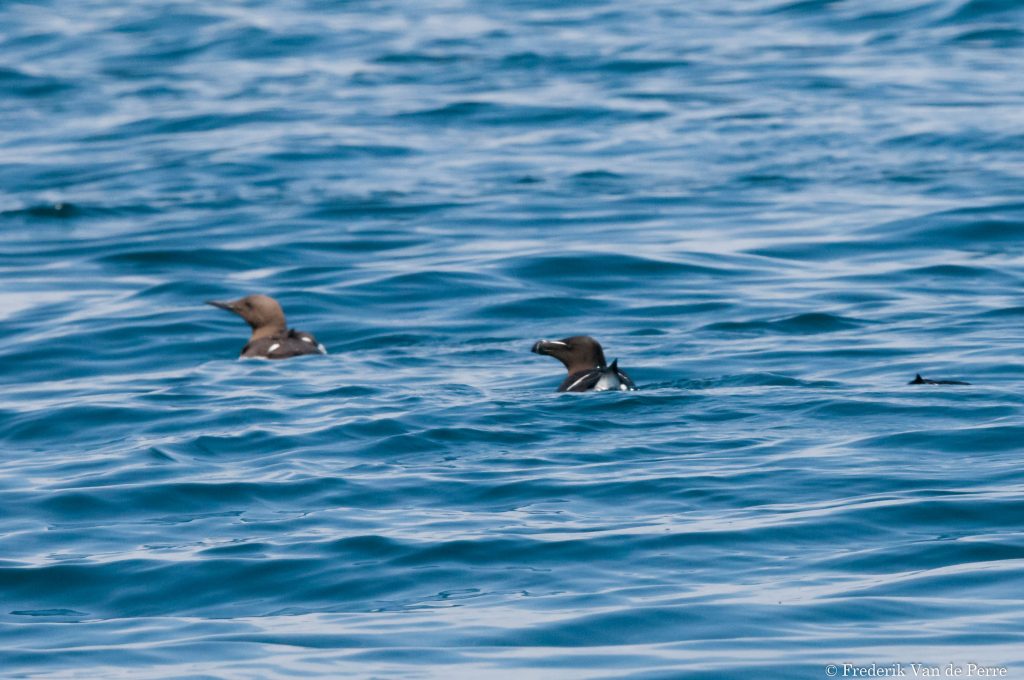
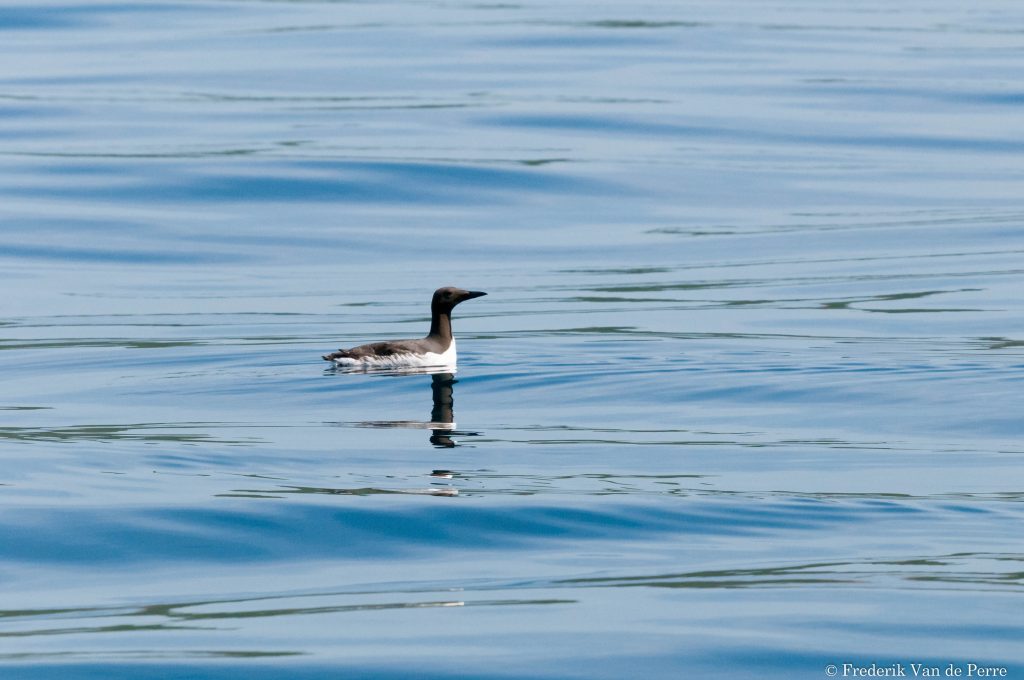
Increasingly rare on the Cornish coast, Atlantic Puffins (Fratercula arctica) only breed in very few locations in the United Kingdom. They however often hang out near other seabirds’ colonies and we would advise to carefully check all birds near such colonies. How exciting it is to see the so-called ‘parrot of the sea’! Our closest encounter with a puffin was on our second boat trip, near Padstow, but we managed a few days later to spot eight of them swimming close to the Ladies’ Window, a famous landmark near Boscastle. Even from far, you cannot fail to see how beautiful they are.
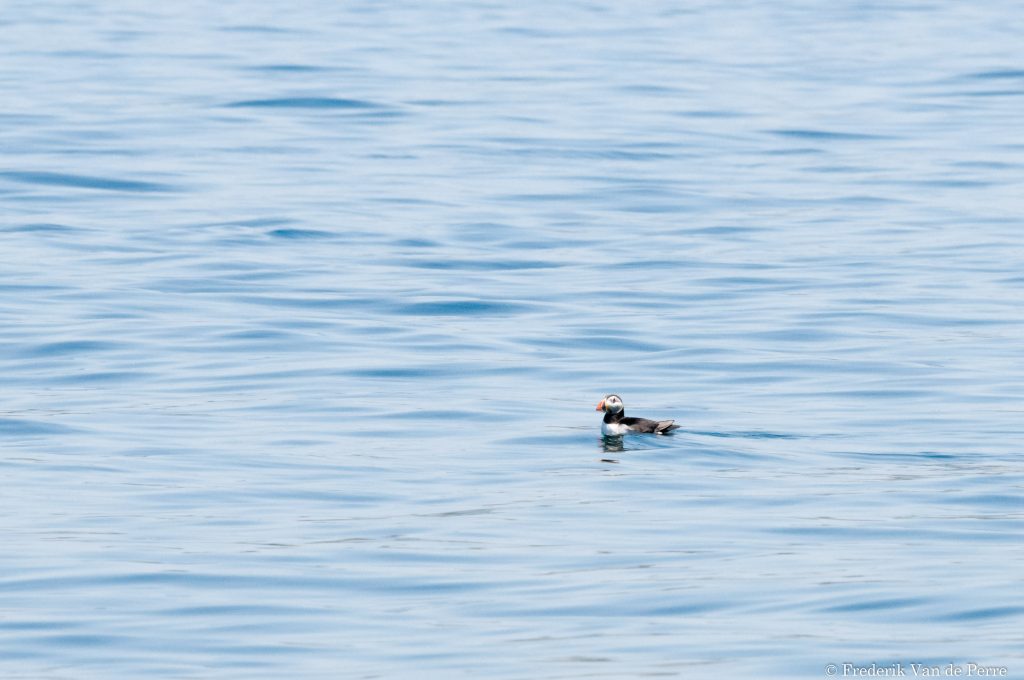
Puffins are hard to find, but luckily, they are not the only nice birds to admire around! Northern Fulmars (Fulmarus glacialis) are present almost everywhere around the coast and even if you may first mistake them for a gull, there is no doubt they are beautiful, elegant birds which deserve to be looked at carefully.
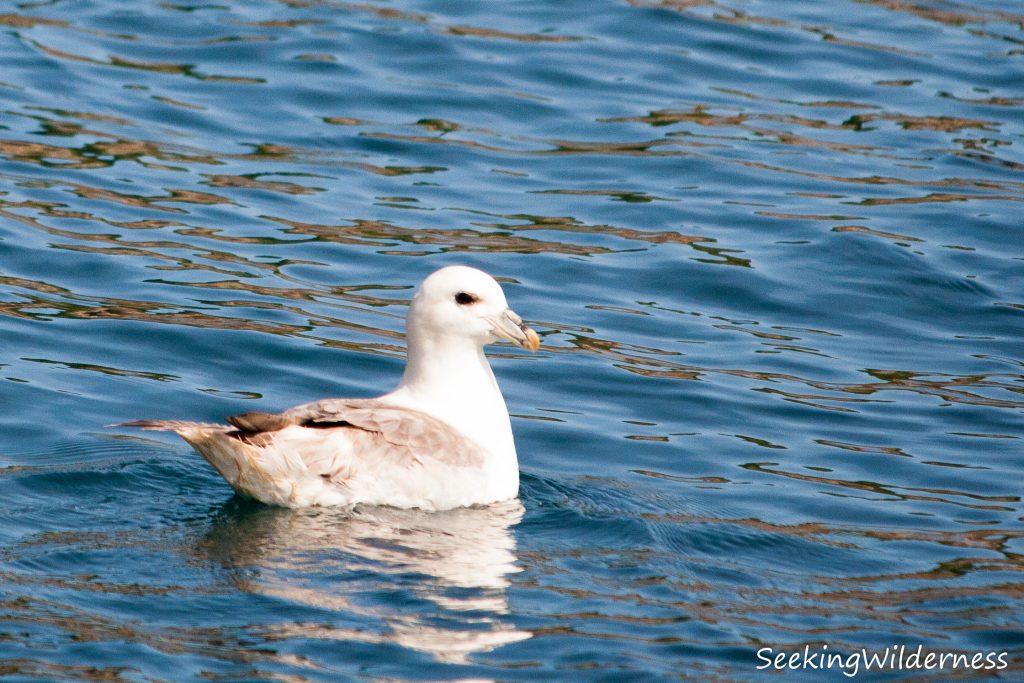
The all-time favorites of the seas showed up almost as soon as we reached deeper seas: Short-Beaked Common Dolphins (Delphinus delphis) came to play around the boats for the greatest pleasure of all passengers. While most of our fellow tourists only showed limited interest for the seabirds, the air rang with the admiring cries of adults and children alike when the glistening bodies of the dolphins emerged close to the boat. Impossible to refrain from smiling widely at the sight of these magnificent creatures and their adorable offspring playing together in the waves.

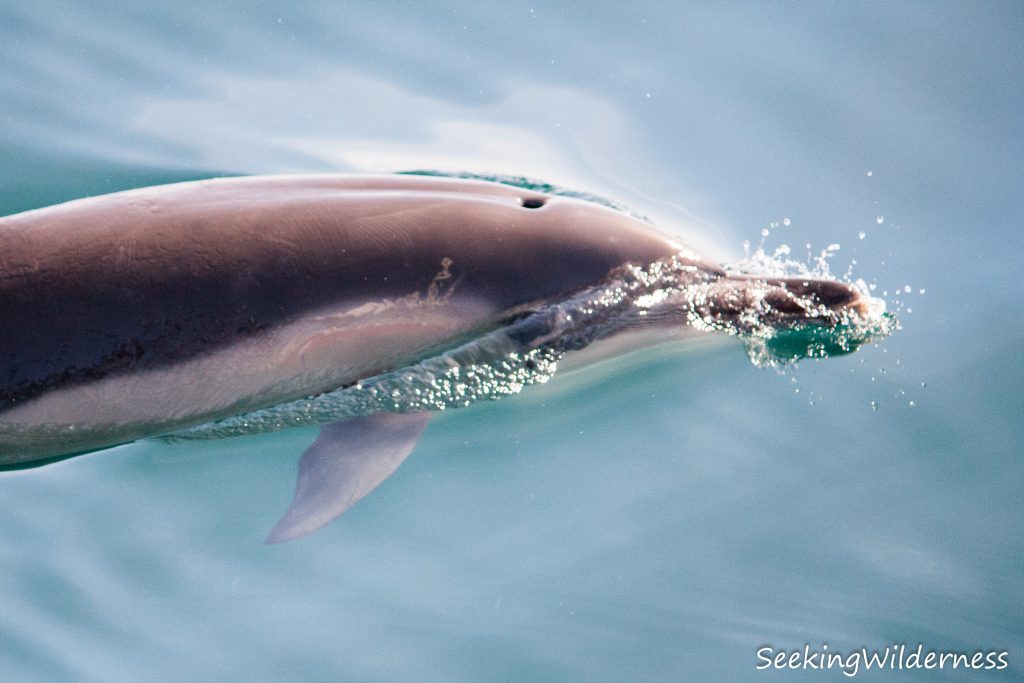
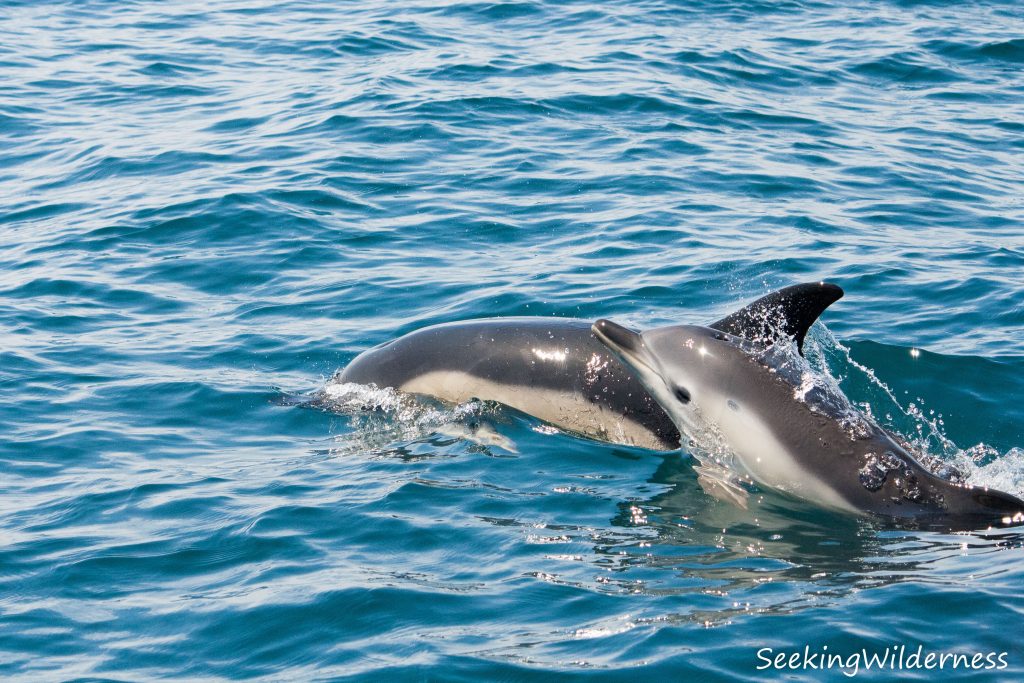
Unlike dolphins, Harbour Porpoises (Phocoena phocoena) do not approach boats but you may see their little triangular fins. We hoped to see Basking Sharks (Cetorhinus maximus). But although these giant and gentle animals are sometimes seen off the Cornish coast at the end of spring, there have been fewer of them in the recent years and we did not get lucky (this time).
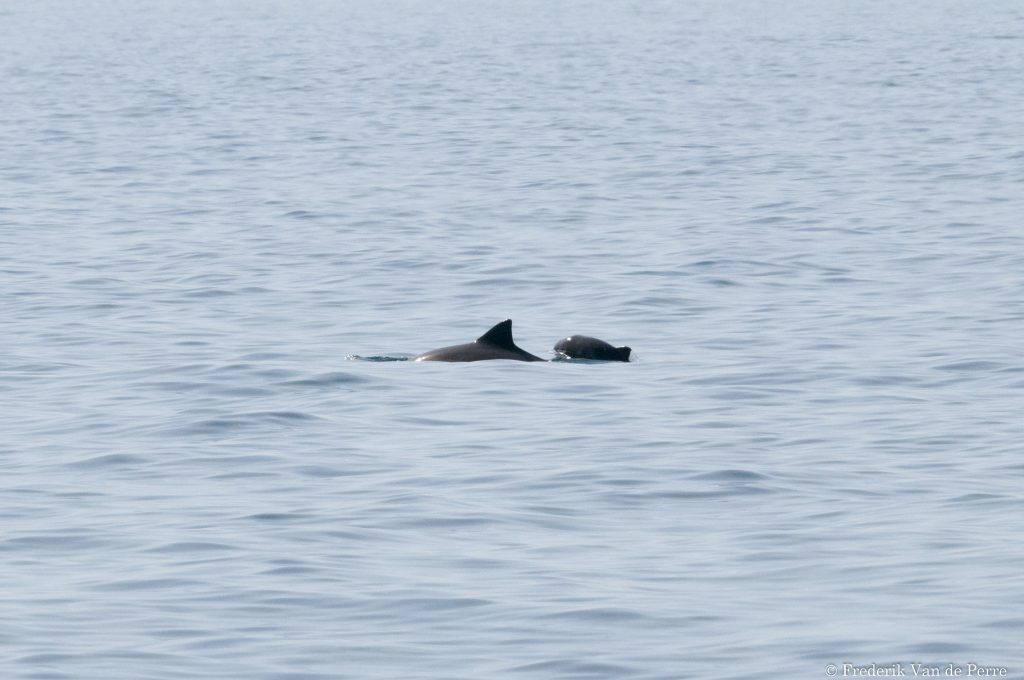
But the sea-safari did not end there! The British Isles are one of the main strongholds for Grey Seals (Halichoerus grypus) which can be observed all-year round. We indeed saw them all around the coast, basking in the sun on rocky outcrops or swimming in the water. Keep an eye open and binoculars close-by to spot heads poking out of the water or silver bodies laying on the rocks. Are you keen to see adorable big-eyed seal pups? Head to the pupping beach of Godrevy at low tide in autumn and winter months!
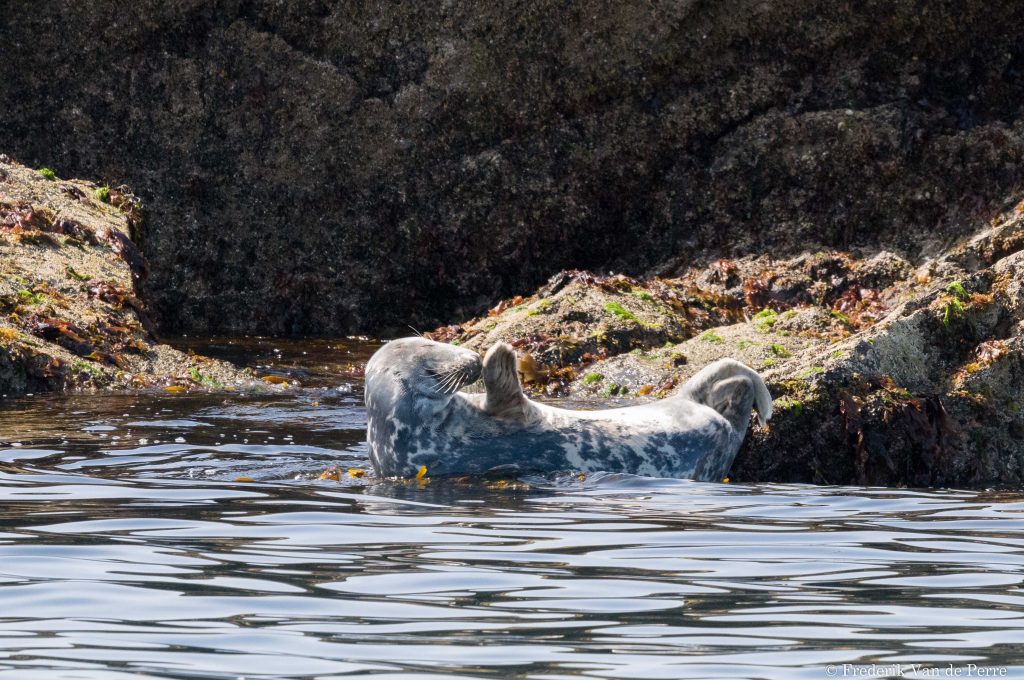
MAGICAL LAND
There are few coastlines more dramatic and stunningly beautiful than that of Cornwall. Picture purple flowered Cornish heathlands ending abruptly with steep sea cliffs plunging straight into the crystal-clear turquoise sea. It is a paradise for hikers, photographers, botanists and animal-lovers alike. Hiking is simply prodigious, with the South West Coast Path running continuously (for 630 miles or 1014 km) along the Cornish Coast. Our absolute favorite stretch was the one around the Lizard Point, starting from the village of Lizard. We were unprepared for the sheer beauty of this area and we stood mesmerized in front of the first cove we walked upon, both speechless but absolutely delighted to be there.

Ancient stones are scattered around the region, positioned carefully by an ancient folk who believed in the power of nature and adored the seasons. Whether you admire the Merry Maidens of Boleigh, the Men-an-Tol or an anonymous stone circle you stumbled upon during a walk, the feeling is always the same: there is something definitely magical and deeply mysterious about these remnants of the past.
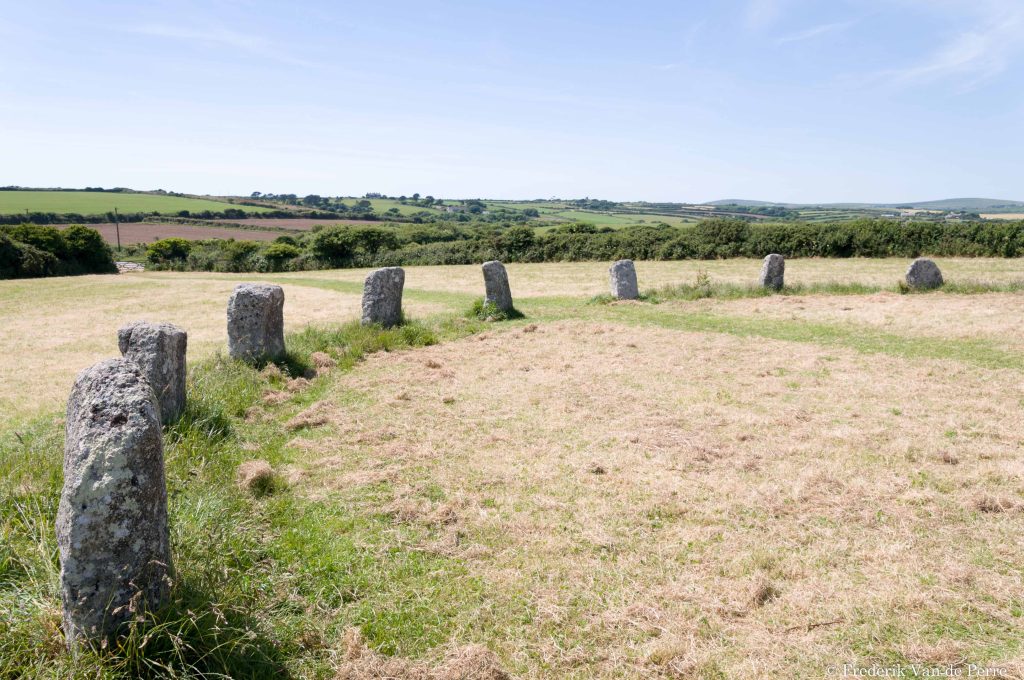
If you are lucky enough to see a sunny day in Cornwall and if you still have some energy left at the end of a wonderful day hiking, swimming or birdwatching (or all of it), look for the highest place with a view on the sea and wait. Watching the sunset from the top of the first and last hill in England (Carn Brea near St Just) was like watching the creation of the most beautiful painting in the world. While the sky turned from pink to deep orange and purple shades, we enjoyed a moment of pure beauty and calm.
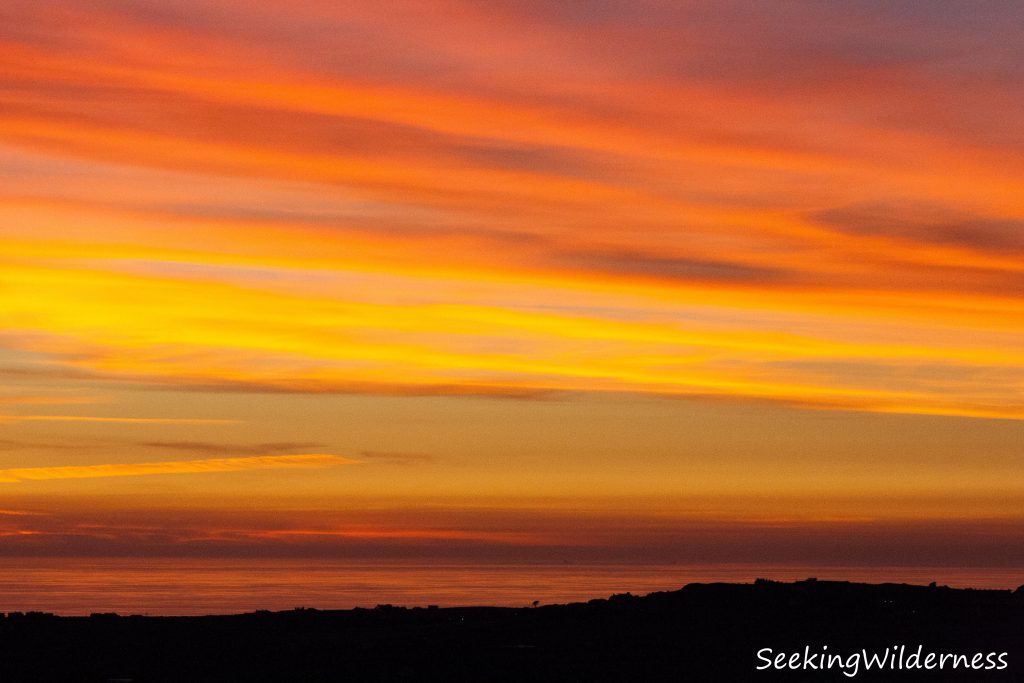
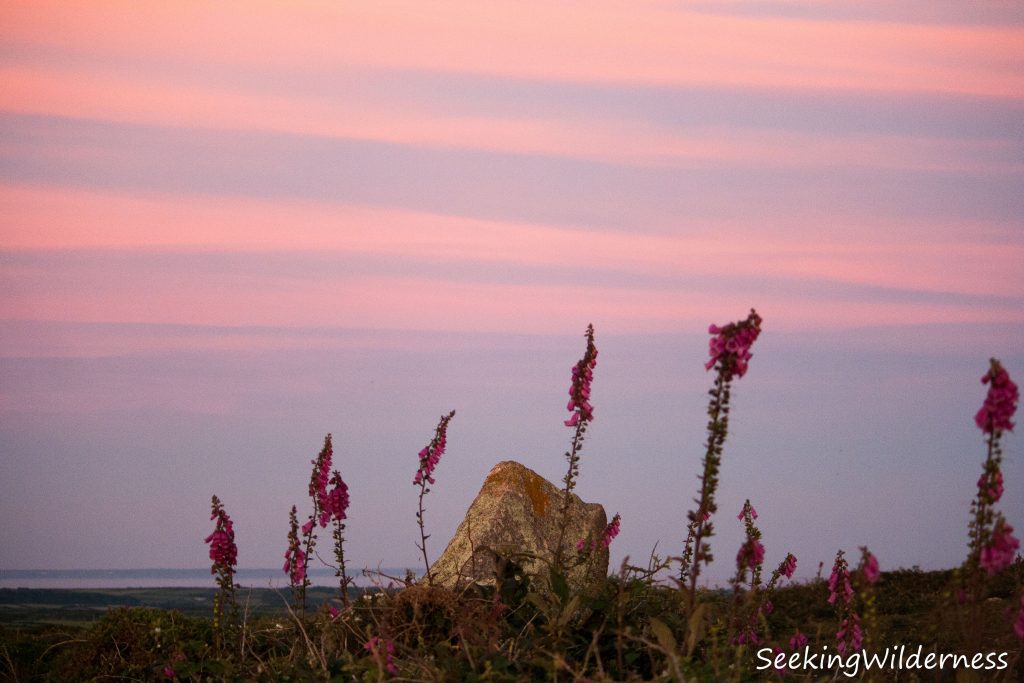
While walking the moorlands, watch adorable Linnets (Linaria cannabina) bathing in the brooks and Skylarks (Alauda arvensis) shoot up in the air, listen to the Common Whitethroat (Sylvia communis) singing and to the majestic Raven (Corvus corax) croaking, find Rock Pipits (Anthus petrosus), Stonechats (Saxicola torquata), and Northern Wheatears (Oenanthe oenanthe).
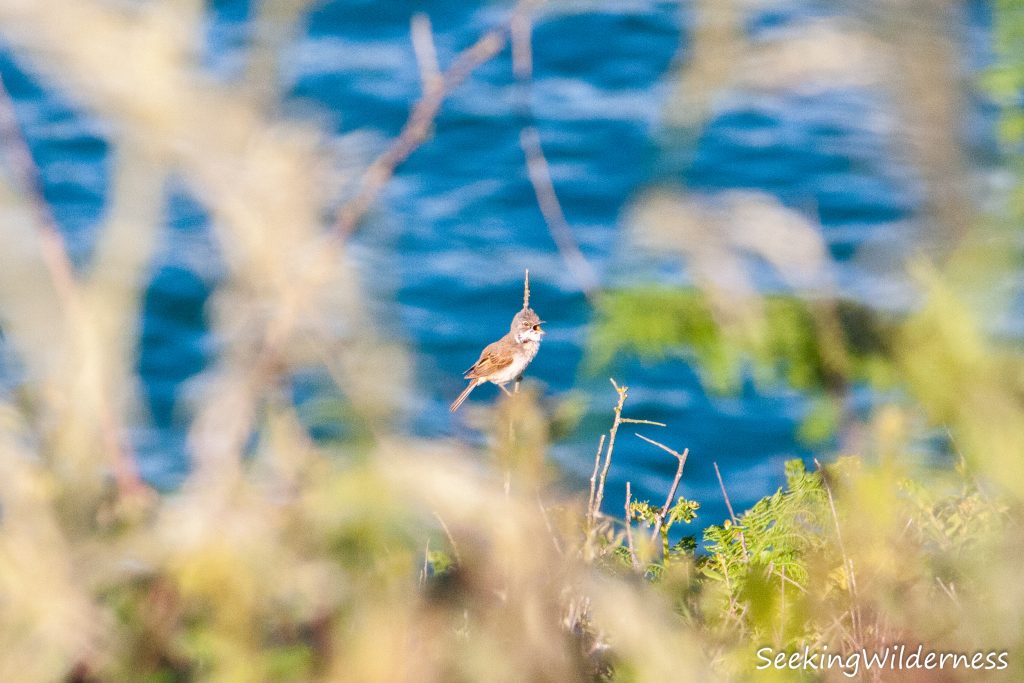
If you are looking for a local rarity, keep an eye out for the few Red-Billed Choughs (Pyrrhocorax pyrrhocorax). Choughs used to be common in Cornwall and it is thought that the very soul of King Arthur remains in the body of one of them. Driven to extinction by a combination of habitat degradation and hunting, choughs, easily identified by their bright red bills and legs, have recently started breeding again in Cornwall.
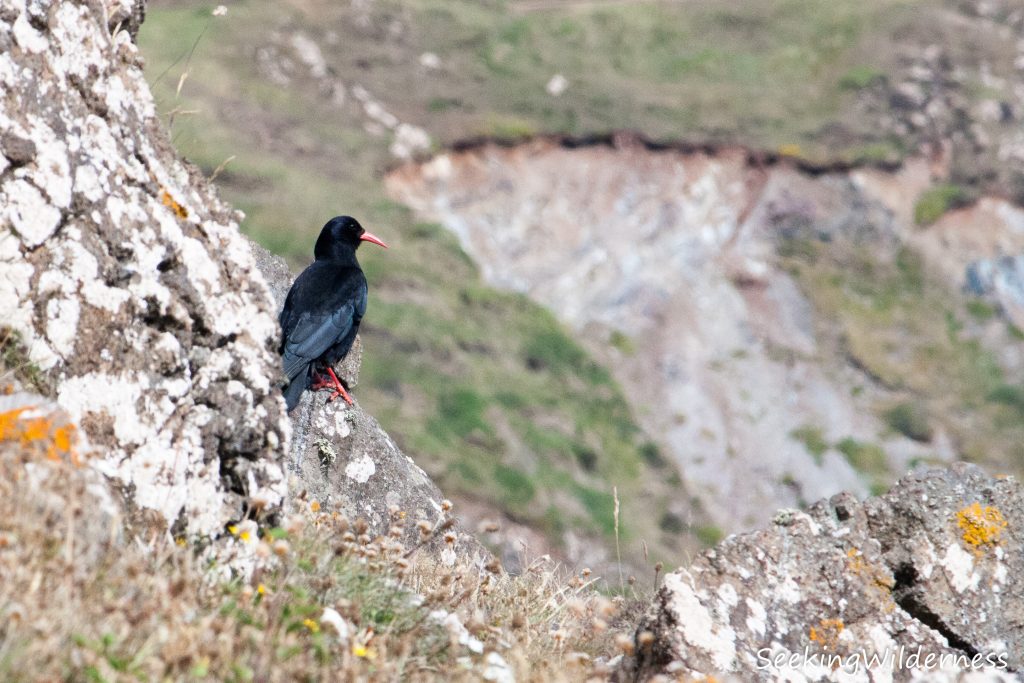
But Cornwall is not only about its coast! There are countless beautiful places to visit inland with pretty patches of ancient woodlands, waterfalls and wild moorlands. We had been told that a good stroll in the Windmill Farm Wildlife Trust reserve was an easy way to find the Common European Adder or Viper (Vipera berus). Even though we arrived late (you should get there early morning, just after sunrise) we found an adder warming up underneath one of the many tin boards lying around the reserve. If you find a snake, try and keep disturbance to a minimum by quietly replacing the board after you have had a good look (or a picture).
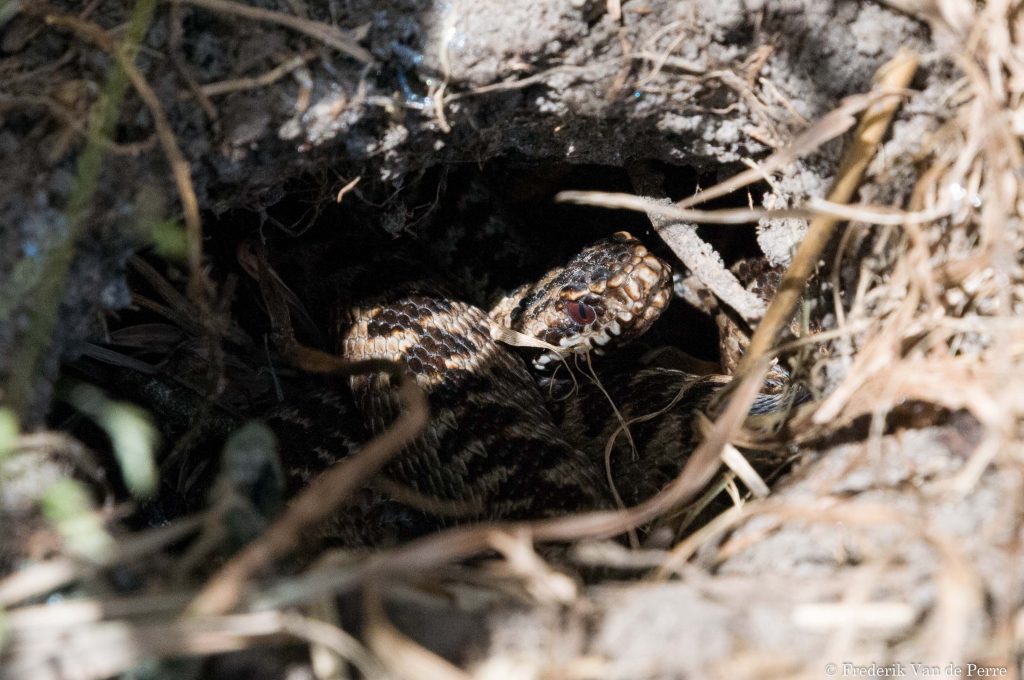
Touristic Cornwall is no longer the wild, remote place of the Arthurian legends. But we have found in this corner of England a beautiful and sometimes exotic place worth exploring. Nature is everywhere for those who can appreciate the fragile flight of butterflies, the sophisticated beauty of orchids, the raucous calls of seabirds and the vibrant sunsets on this stunning coast.
